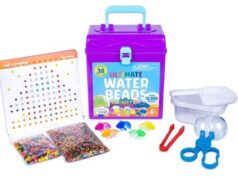
Like other with products, when a defective or unsafe high chair leads to an injury, the consumer has the right to seek compensation from the manufacturer through a product liability claim.
Parents always worry about the safety of their children, and even though recent changes in products designed for children (such as playpens, toys, car seats, and strollers) have made huge strides in safety, a recent report published in Child Pediatrics revealed that many high chairs are still not as safe as they should be.
According to the report, there was a 22 percent increase in the number of children injured by high chairs during a recent seven-year period. There are approximately 9,400 children in the United States every year who seek medical treatment because of highchair-related injuries.
The most-common and most-dangerous type of high chair injuries results from falls. Falls from highchairs can result in traumatic brain injuries, broken bones, skull fractures, internal bleeding, concussions, fractures, paralysis, and even death.
The aforementioned report emphasized how important it is to properly use a high chair. For instance, when parents do not secure a child into the high chair and/or do not attach the tray, the child may fall when he or she attempts to stand up.
The report revealed that two out of three children who fell from a high chair were either standing or climbing out at the time they fell. This information led researchers to the conclusion that making sure the belt is always buckled and the tray attached may prevent a significant number of accidents involving high chairs.
Responsibility of the Manufacturer and/or Retailer
When high chairs are defectively designed/manufactured or lack adequate warnings and someone is injured as a result, the manufacturer can be held legally liable for reimbursing the victim for their related losses.
If a particular model has been recalled, but a retailer failed to remove it from their shelves, they may also be held liable for any resulting injuries and losses.
Unfortunately, bringing a product liability claim is not a simple process for most non-attorneys. Fortunately, most product liability attorneys work on a no win, no fee basis.
Recalls
Several models of high chairs have been recalled recently due to defects in the chair’s design or during the manufacturing process. Some of the more common defects include but may not be limited to the following:
- Ineffective stability or high center of gravity, which can cause a chair to tip or fall away from the frame.
- Locking mechanisms that do not work properly and can result in causing folding chairs to collapse.
- Insufficient or ineffective restraints.
A few of the most-recent highchair recalls:
- Nuna Baby Essentials high chairs were recalled on February 11, 2016 because they presented a potential fall hazard.
- Safety 1st Décor wood highchairs were recalled on October 8, 2015 because they presented a potential fall hazard.
- Oxo Nest booster seats were recalled on May 21, 2015 because they presented a potential fall hazard.
- Mima Moon 3-in-1 high chairs were recalled February 5, 2015 due to a potential fall and impact hazard.
Before you purchase a highchair, be sure to do your research. Reference the CPSC website for active recalls, and look for trusted user reviews.
If possible, try to purchase a high chair that was manufactured later than July 2010, as this is when the Danny Keysar Child Product Safety Notification Act required tough new standards and made it easier for consumers to be alerted of new recalls.







